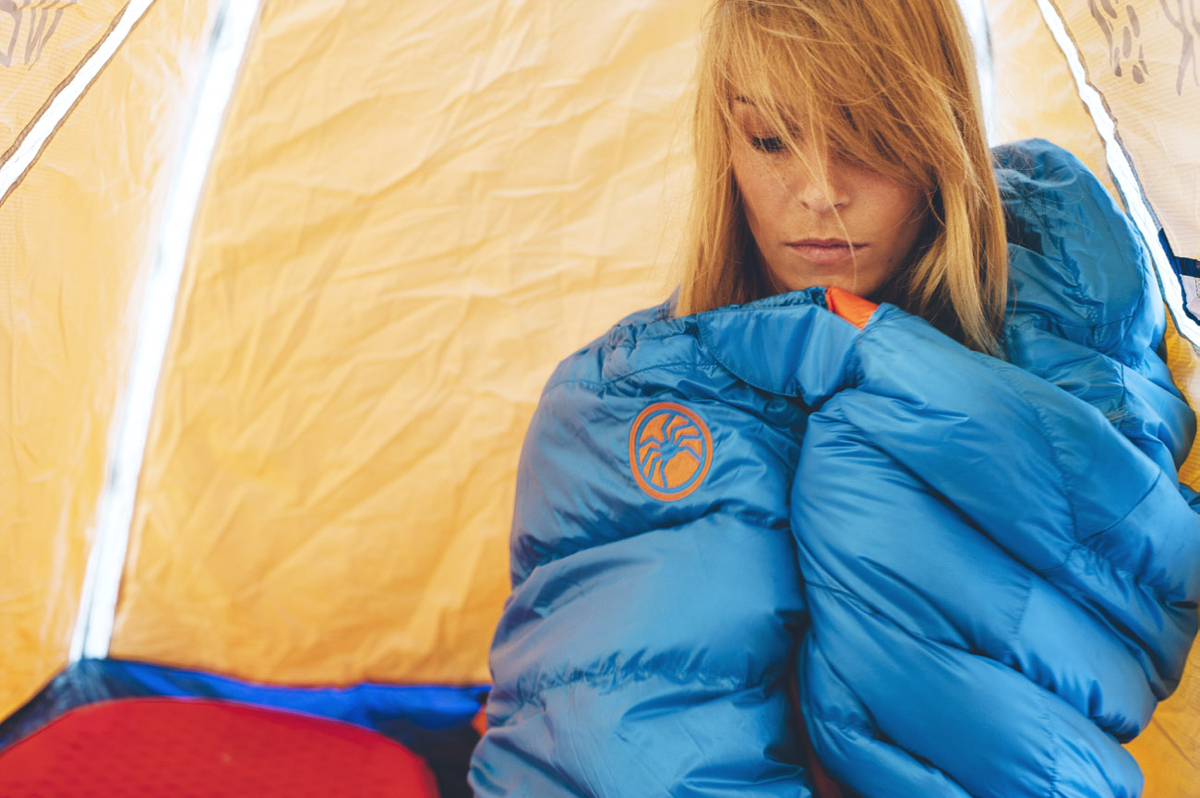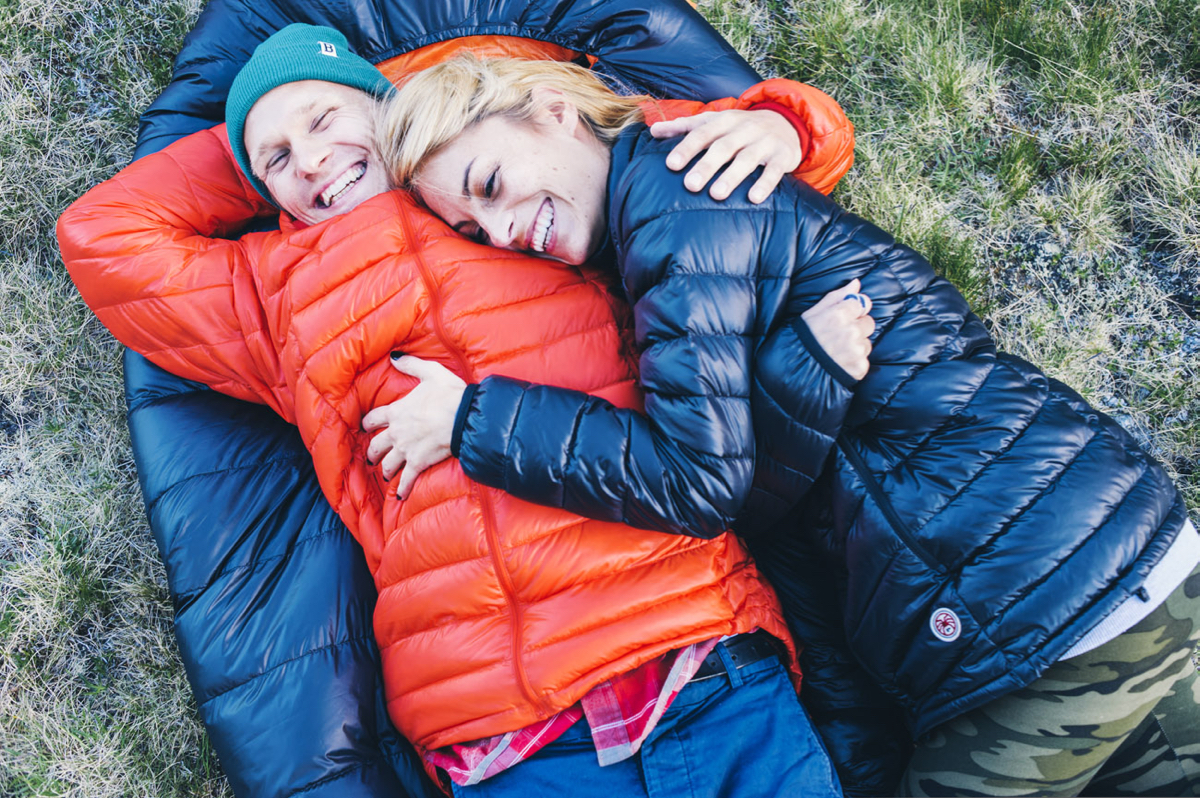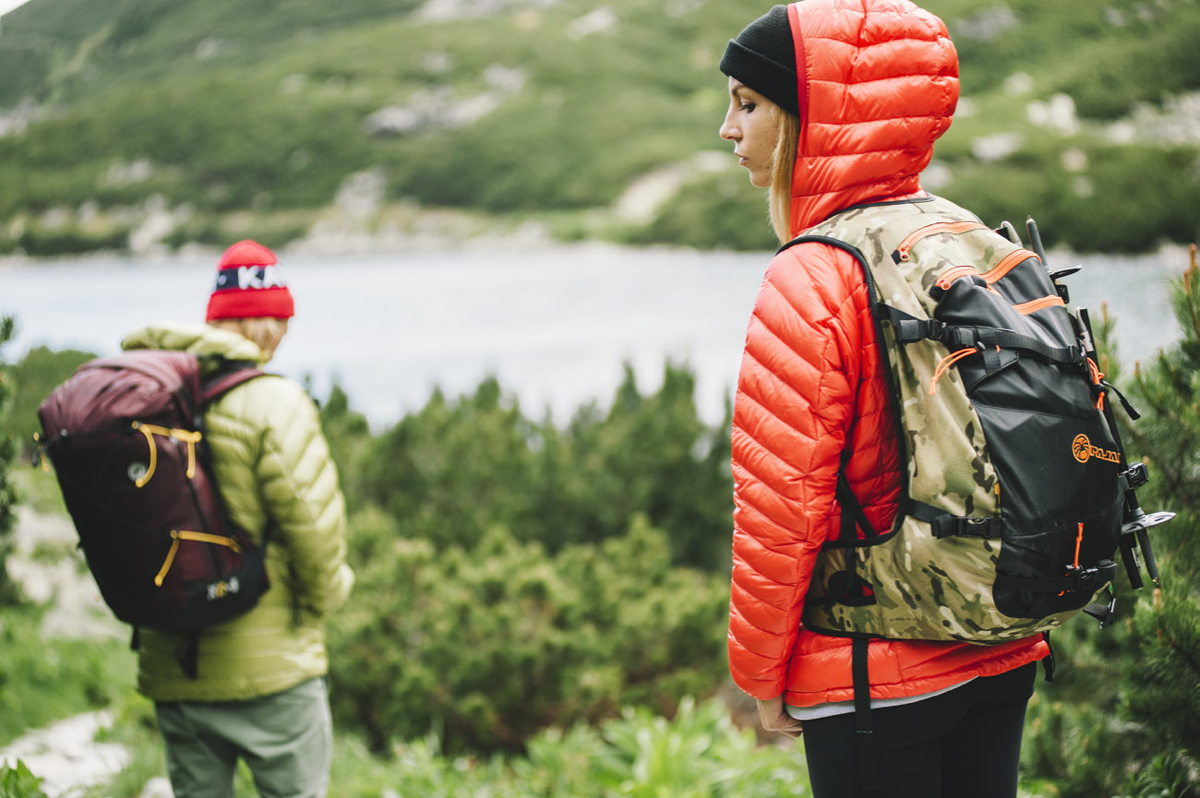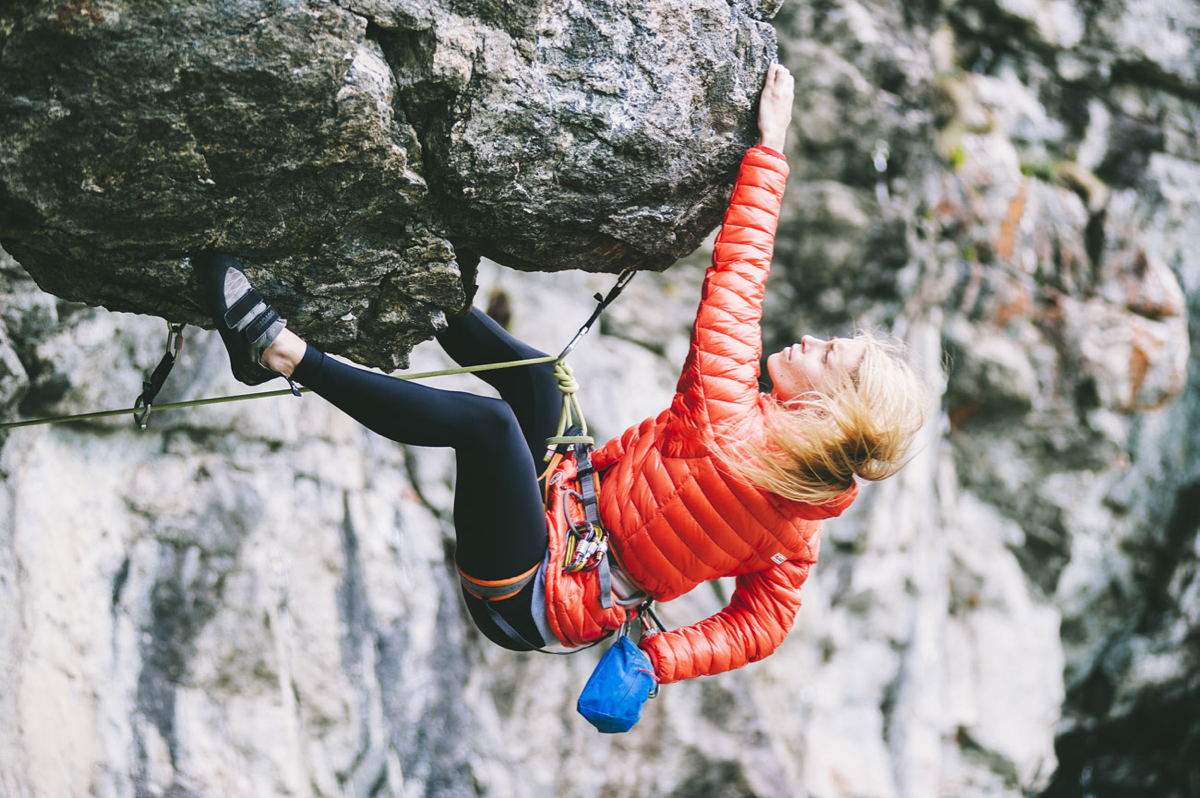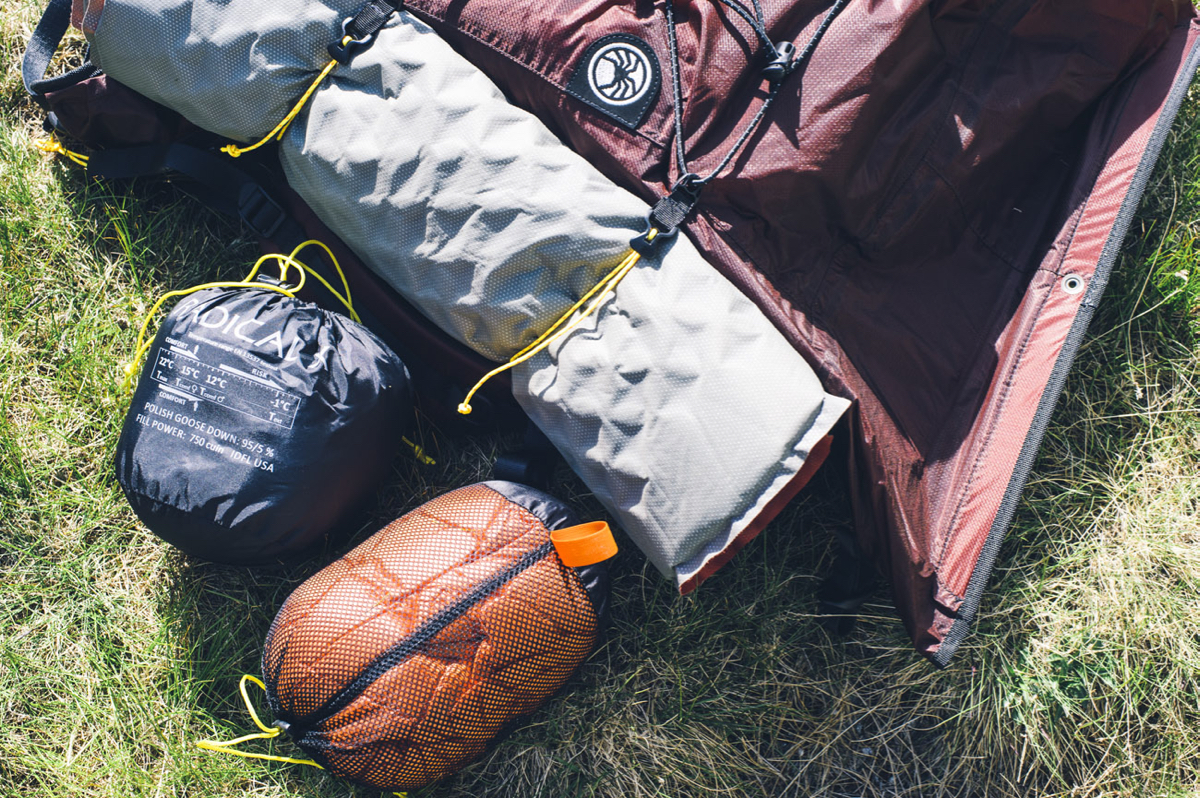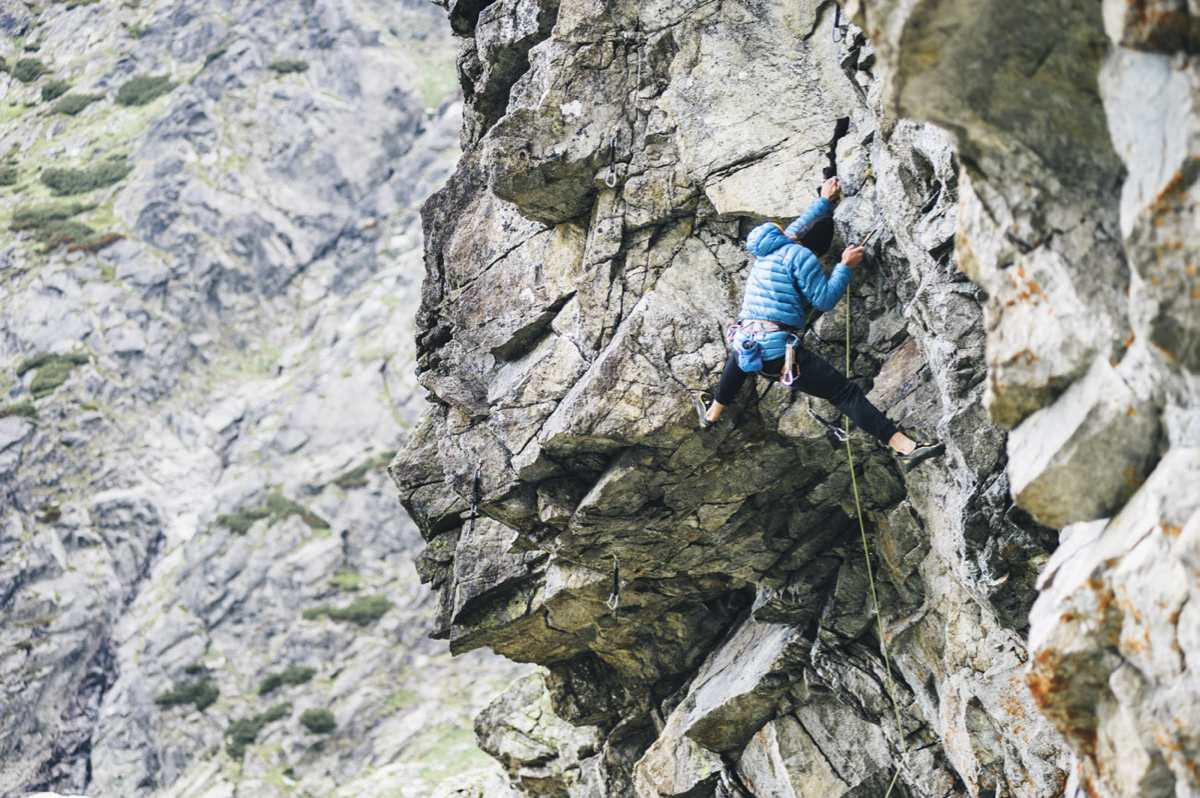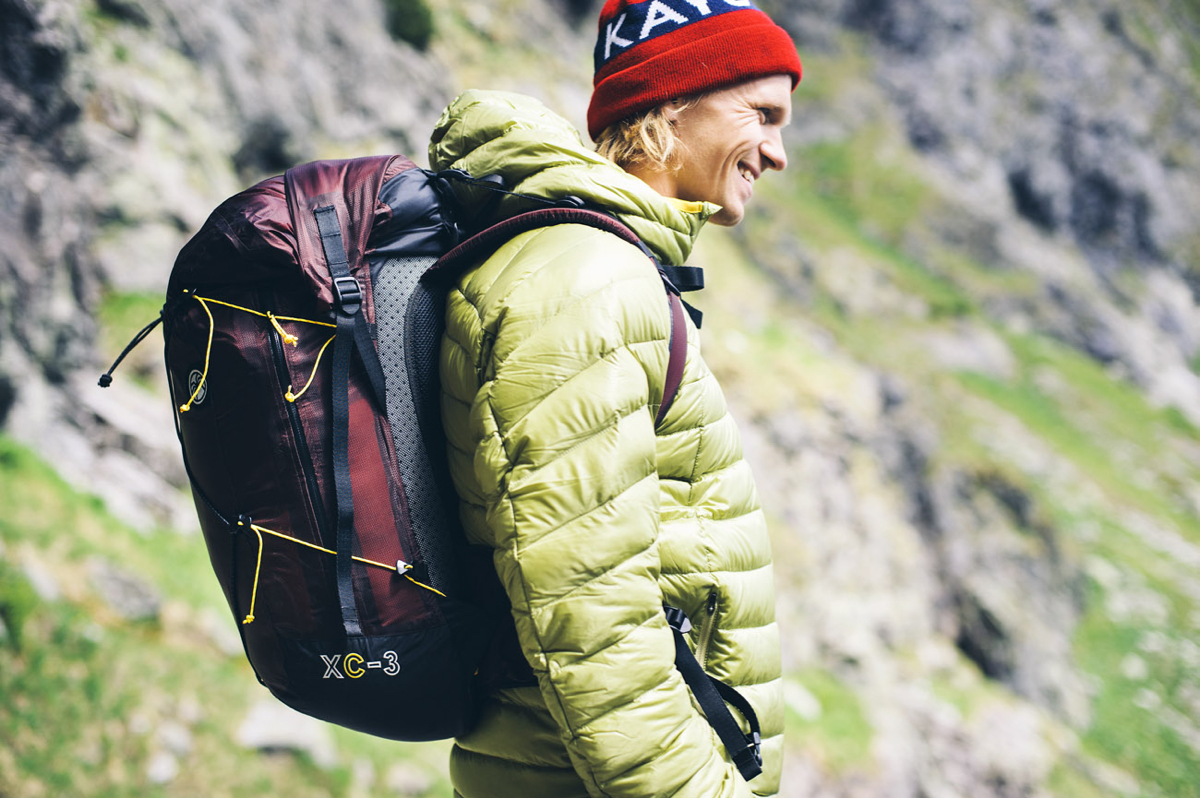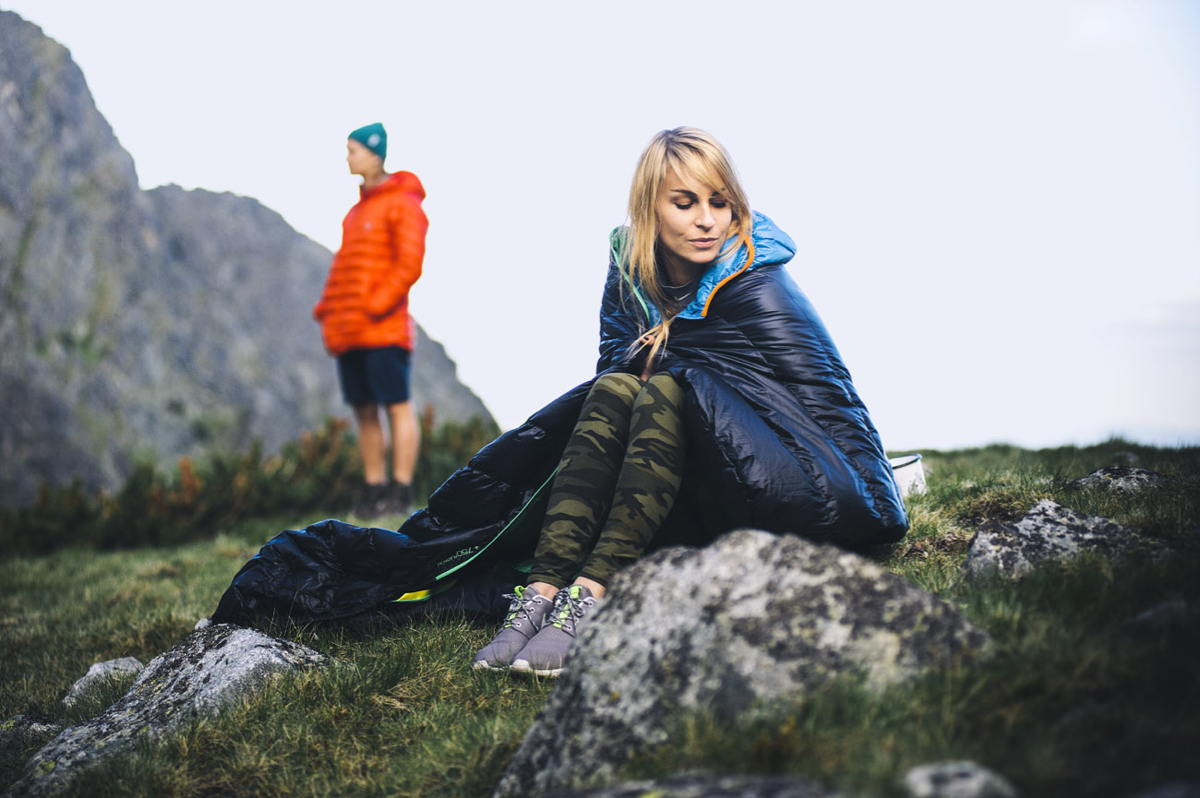Wojtek Pająk: – We are light & fast
Bielsko-Biała | Text: Ewa Trzcionka, Photos: Marek Ogień Michalski
4 January 2016 | Design | People | Things | Life style |
reprint: www.designalive.pl/
– We place emphasis on quality and on a high-end client who is aware of their choices and who attach to the product their intentions regarding the activity they will engage in – says Wojtek Pająk, co-owner of Pajak Sport in an interview with Design Alive.
The Swiss wiped their eyes in amazement that a small family business in the Beskids is able, as if by magic, to materialize a project that has been developing over the years, in cooperation with universities and even the government.
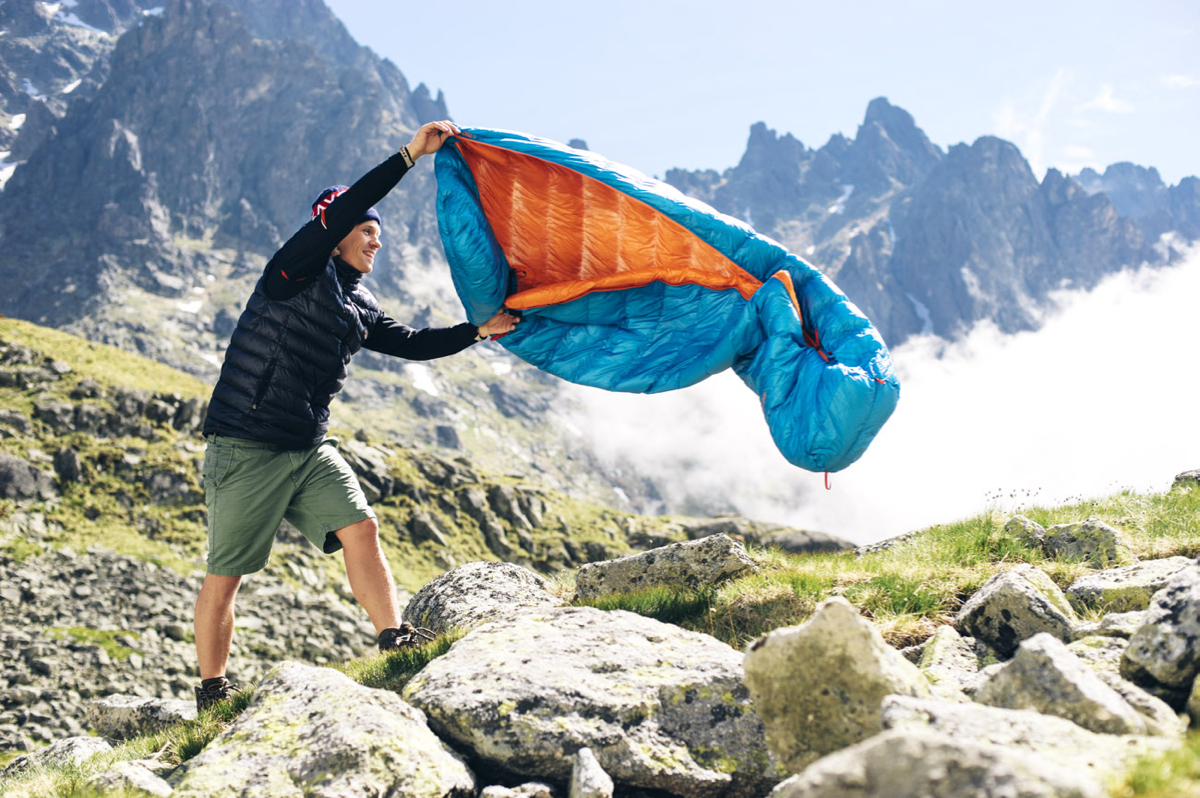
I don't hide the fact that Pajak is nothing new to me. I spent my high school days in Bielsko-Biała, when professional frames of Polish snowboarding were being formed there. There was also a snowboard subculture – Bielski freestyle. Everyone wanted to snowboard, or at least look like they were. The trend was set by the best: brothers “Pepek” and Łukasz Starowicz, Wojtek and Grzesiek Pająk, Gosia Rosiak, “Herman” Hermanowicz. They took over the consciousness of Biel high school students. Books were carried in a backpack, which had the opportunity to mount a snowboard, because after school (or instead) they went to Szczyrk. Pajak was written on the backpack, because Pajak was for us a brand not only of Olympic skating, but also of accessories, the creation of which was advised by the master himself Wojtek Pajak. Now I'm meeting Wojtek, twenty years later. I have in front of me a calm, mature entrepreneur managing the company Pajak Sport. And wearing the best thing I’ve bought in recent years – an ultra-light down jacket with a spider mark. Sentiment left? No. This choice was very rational. I wear it on cool summer evenings and winter mountain climbing; going shopping and going to a jazz concert. Fits in a woman's purse.
What is the Pajak brand today?
Wojtek Pająk: – We should start with the fact that we are a small family business and this places us in the market. We do not compete with large format companies that sell large volumes of products according to the scheme: production in China and sale in Poland in chain stores. We place emphasis on quality and on a high-end customer, aware of their choices, and associating with the product intentions regarding the activity they will engage in.
And what did the beginnings look like?
– I'm the successor. The company was founded by my parents, Ewa and Andrzej, when they were studying and were not yet married. At that time, it is known that there were no resources available. I remember the story of my parents, how they sewed some pants out of the curtains. This was the beginning of the Pajak brand.
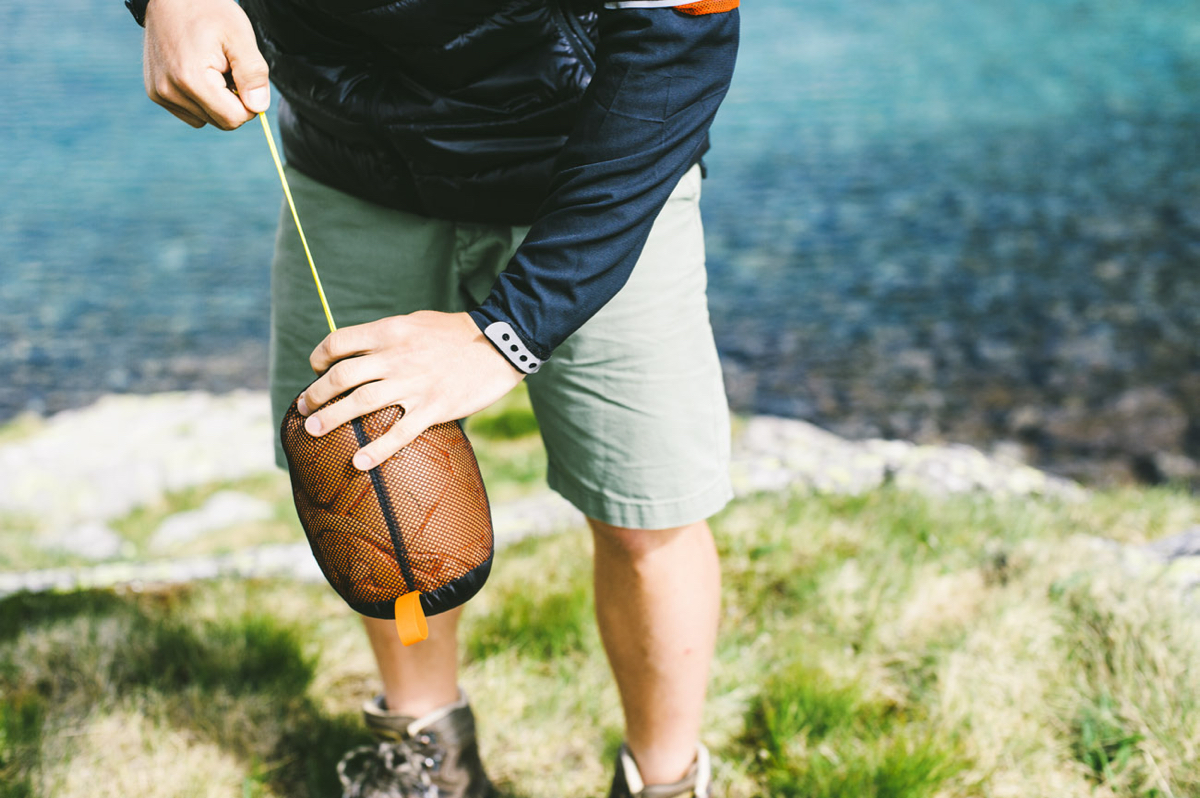
What did Eva and Andrzej study?
– Both studied electrical engineering at the University of Technology in Gliwice. And that's where it all started. Then they married and lived in Bielsko-Biała. I remember those times. There were three of us siblings, and everything took place at home. That's when we started sewing down things. At the beginning there were fluffy bribes – warm gloves – and it looked very funny, because the whole production took place in an apartment, in a block, on the tenth floor. Over time, a neighbor was connected – an addictive smoker and entering her apartment, you could hang an axe on the smoke. She sewed, Mom stuffed those things in the bathroom with fluff. The sewing machine was on the sink, and there was a bag of down in the tub. The bathroom was out of our lives for the time being.
Who were those gloves for?
– Back then it was not sewn “for someone”, because everything that was sewn was sold. Later, when we started sewing down jackets, it happened that someone called on a Saturday. I open the door, and there is a whole bus of Yugoslavs: “Good morning, we’ve come for jackets.
You had an interesting childhood!
– Oh, I did. Then came the period of transformation, communism ended and then came the time of greatest prosperity for our company. The down stuff fell on the other track and we started to sew synthetic sleeping bags, which at that time, and it was the beginning of the nineties, were making a sensation in Poland. Practically everything we sewed, we sold. Huge quantities. And so throughout the '90s. It was a very good time for us. Then the market saturated, more and more global brands began to be present in Poland, products became cheaper and cheaper. Then we turned to cooperation with foreign companies. We sewed for others not only from Poland, but also from Europe.
Has this happened outside your bathroom before?
– Yeah, that's a story two seats down. We went back to down, sewing for other contractors and it turned out that we are very good at it, that the down background starts to pay off. There were more and more orders and at that time the Pajak brand and our products went to the side. But because we sewed down things, we decided to go back to this technology over time. I knew right away I wanted to go that way.Od razu wiedziałem, że chcę iść w tym kierunku.
Who did Pajak from Bielsko-Biała sew for?
– We sewed a lot for the German company Yeti, for Crux, a British brand that offered specialized, expensive clothes and accessories for climbers. It was the middle of the 2000s.
What made them choose your company as a subcontractor?
– Quality and proficiency in challenging technologies was the key to getting these orders. Then we slowly started to come back with our brand Pajak. At the beginning it was based on synthetic sleeping bags, we also offered membrane jackets and a lot of backpacks. When the backpacking period was over, we decided to leave only two or three very light and specialized ones in the offer. One Extreme – for all-winter mountain sports: skitouring, snowboarding and the ultra-light XC-3, which we started to take a serious look at and develop the whole concept. In the beginning, the goal was to lose as much weight as possible, which we succeeded in each of the three successive versions. Now we're developing a fourth model. It won't be any lighter, but there are some cool technical solutions planned. We remove the stitches from it, treating it as one whole.
Who buys such a thing?
– This product is appreciated mainly by people who follow the philosophy of light & fast, that is, they appreciate functional and light equipment. It is not a product with a lot of features where half of them are useless or useful extremely rarely. Any gadget like that would weigh another gram. Although it is not eye-catching, some of our customers are attracted to this backpack by its resulting appearance.I knew right away I wanted to go that way.
How do you get these effects? What does the research and testing process look like?
– Every product must pass the so-called field tests, i. e. be in action. We are active ourselves and we also take these novelties to check. But we also send them to people who use them for a while. Some people can break it down into first parts, and such detailed opinions give us a lot.
You also cooperate with Andrzej Bargiel, a young, outstanding ski mountaineer. Everything on his expedition goes through a real test range. Is this an irreplaceable source of product knowledge?
– These are extreme tests and extremely valuable. Andrzej Bargiel with this backpack has already ridden two eight-thousanders. He was with him on Shishapangma and Manaslu and from there we got a lot of clues. Andrzej attaches his skis to this backpack and in some places, due to extreme loads, movement and edges of the skis, damage was created that in normal use could never come out. However, it happened during trekking, when alternately it rained and windy, the backpack was exposed to very low temperatures, above 3,000 m above sea level, there was also UV radiation, under which every fabric changes its properties – it rubs faster, it can tear, its structure becomes like a sheet of paper. That sensitivity went out there. In addition, after Andrzej’s suggestions, we decided to double lock all the straps, straps and other elements in the CX-3 backpack, so that nothing accidentally comes out. With such light products, it is often forgotten. After Andrzej’s expeditions, we put emphasis on this.
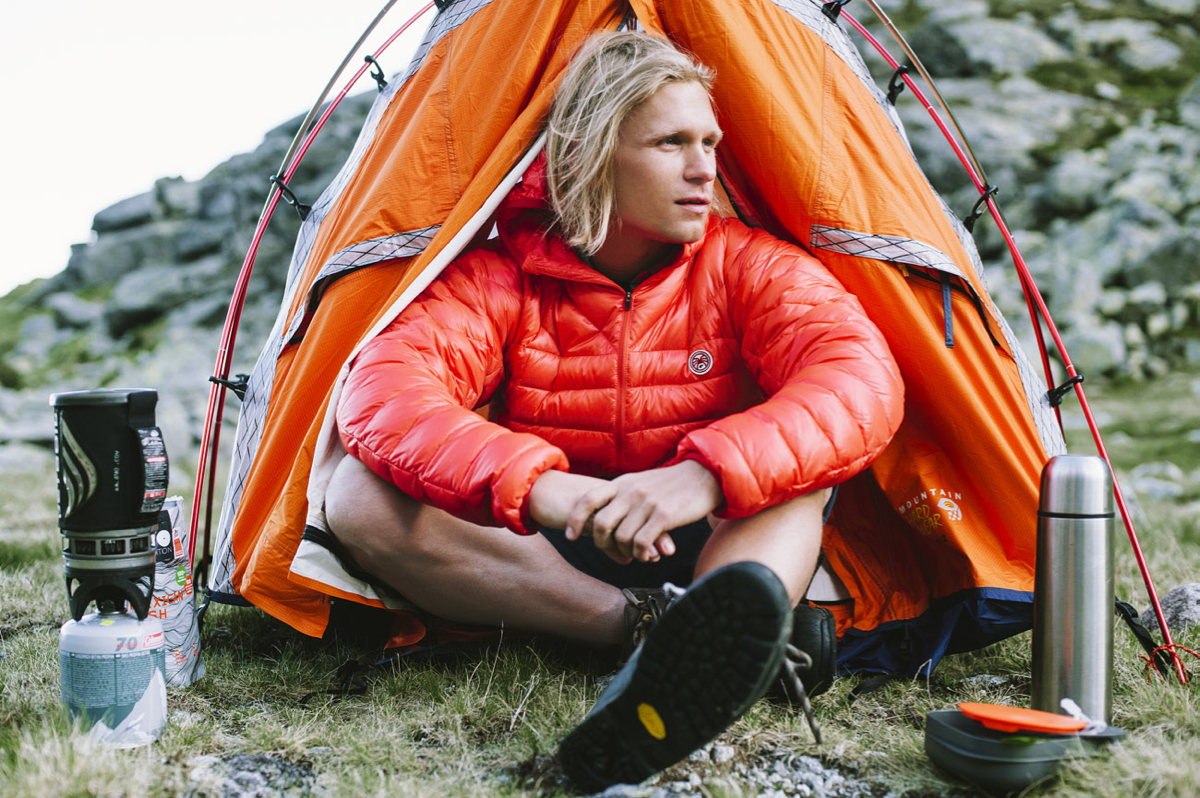

You mentioned the company's big comeback to downwear. What's so great about this down that it's worth going back to?
– First of all, Poland is currently the best in the world. This is due to the fact that the breeding of Kołudzk geese type W-31, from which the down originates, has been systematised for a long time. Species are not mixed, hence its repeatable quality and excellent expansion. At this moment, more and more companies from all over the world import this excellent quality raw material from Poland. Many companies are also moving the sewing process back to Europe, seeing that in Asia they are not able to obtain such high quality. We have more and more such inquiries ourselves.I knew right away I wanted to go that way.
You mentioned the early days of the company, the '80s, '90s. What did you do as a boy in those days?
– I was studying. In 1994, I went to high school. And I snowboarded. Professionally. At the beginning of the 90s I was still a skier and skied in the Polish junior team. Then until 2000 I belonged to the Polish snowboarding team. I spent practically my entire childhood in the snow. We went to competitions, preparations, I actually visited half the world at that time.
Does this experience work for you in the business you run?
– Sure, very much. Thanks to these trips I have the ease of making contacts, I know languages and various other cultural conditions. It's easier for me to navigate international business situations. The other side is that I know what to expect from our products. Working with mountain activities helps me a lot in the design process. Due to the fact that I spend a lot of time in the snow, in the mountains, I pay attention to how to plan and use the equipment. This helps you to quickly assess whether a product is worth further development or whether it may need to be abandoned.
What is the decision path in your company?
– We are a team consisting of: Andrzej Pająk – my father, Wojtek Kłapcia – our longtime employee and me. As a team, we make decisions collectively.
Is this work more intuitive, or do you rely on some global research, forecasts, trends, peeping at what the competition is doing?
– Certainly more intuitive in this, it is our management style. Of course, we observe the outdoor market and the changing world, we have our eyes wide open, but because we are small, we have the opportunity to be guided by intuition and try different paths. If something comes up as an idea, we are able to verify it very quickly.
Where does this ability come from?
-Because the company is intimate. We're all close. We have great ladies designers – Danuta Furczyk and Alina Rozmus, who are able to quickly transfer our ideas to paper, unfold them into parts and sew the test product. They have been with us for about 25 years. They're irreplaceable. When I talk about a new jacket, for example, they pull out an older model and already plan: “Here we will shorten, there we will cut differently, here we will sew. I get the finished product the next day. This is very important, because we can quickly materialize the idea, and thus – test it, make corrections and further develop it.
Do you see the weaknesses of your company?
– I see something that's not exactly a weakness. This is a technological distance from Asian companies, especially in sewing solutions. However, sometimes this distance protects us from misplaced investments. There was once a boom for seamless locks, welded to the material. We never had that technology because it was too expensive for us. Over time, however, it turned out that even with ordinary use these things began to come off, so “every stick has two ends”. Sometimes these latest technologies suggest effects solutions, but, because they are not tested in the long run, over time they begin to fall apart. And there's a reverse trend, companies are going back to what's proven and certain.
Bielsko-Biała and the Podbeskidzia region is quite specific. I've even heard it's a mountaineering downhole. Where does such an opinion come from?
–In Podbeskidzie there are actually two companies specializing in specialized outdoor clothing made of down. There's Pajak and Malachowski. It is possible that this was influenced by the proximity of Silesia, where in the 1980s, the heyday of Polish Himalayas, there was a strong group of climbers. Adam Małachowski founded his company much earlier than us and cooperated strongly with the Himalayas. I think he was the forerunner of our area being seen as such a fluffy hollow. Then we joined and today we cooperate with young ski mountaineer Andrzej Bargiel.
You've seen a strong push forward, fresh blood over the last few years. A generational change of guard?
– When, as the next generation, we started to influence company decisions, the marketing approach to the brand changed. We used to be inundated with sponsorship requests from students to equip them for small expeditions. We have fulfilled many of these requests. However, there came a moment when we decided not to fragment and focus on a specific target group. We were looking for an event of greater scale and importance, consistent with our philosophy, to support the venture and at the same time to be associated as a brand with a professional approach to expedition, Himalayan and high mountain issues. And so, we started to focus on getting into a project, not just by handing over equipment, but by looking at what, as a brand, we could gain? We give, but we seek in return, values that will help build an image.
I'm getting a certain dependency. Today’s Himalayas abandon the siege style, where large teams set out to attack; you as a company gain by being a small body ready for change – quick in making decisions, without unnecessary technological gadgets, you rely on intuition for action. . . The image of the company Light & Fast emerges. A time sign?
– Siege-style summit conquest is setting up bases. A team that depends on each other comes to the top. There may be many factors that will not allow success, starting with communication and logistics, and ending with health and fitness. Andrzej, on the other hand, began to chart a new path. He does it quickly, on his own, and virtually all the risk falls on him. It is the decision-maker and the controller of its own security. It doesn't put other people's lives at risk At the same time, he has an extraordinary ability. He can even “run” to the eight-thousandth, and then ski down from it. He knows that every time he goes down the subway, his safety increases dramatically. Probably both styles will last in parallel. However, subjectively I can say that I am impressed by what Andrzej does. And you can probably find an analogy to how Pajak is managed.
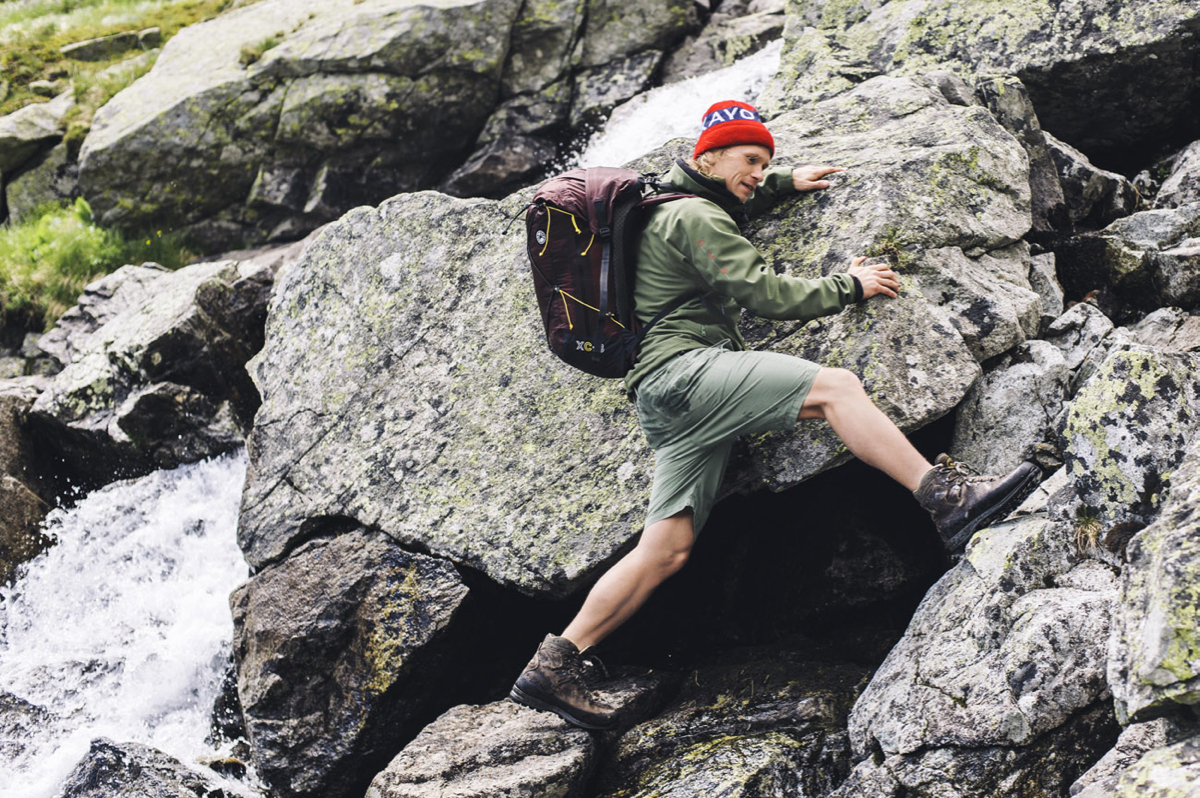
Where will Andrzej go now, continuing his project Hic Sunt Leones? Are you going to dress him again?
– For sure! We prepare a new suit for him for each trip. The previous one on Broad Peak we designed ourselves with Andrew, who made the decision to go very quickly and there was not much time left to bring in an outside designer. We opted for the black color and made some changes he suggested. It went great. Tomasz Ossoliński planned the suit with us for an earlier expedition to Manaslu. It was a nice outfit because it was made of tyvek.
It's pretty risky. Tyvek has not spread?
– No. It held out, which was really cool, because we had a lot of concerns about whether it would work. We did not manage to get the information that anyone ever tried to play with a tyvek above 3,000 m. Andrzej entered, drove down. The suit came back intact and is now on display at the Museum of the Mountain Center of the Earth Crown in Zawoi.
The suit looked very messy. Tyvek was printed with highlander designs, and Andrzej wore retro goggles for it. You have breathed a lot of lightness and humor into a very serious mountain world. Are you aware of that?
– This is the main merit of Andrzej. He's an amazing man. He's making his dreams come true and he's playing with it. He loves to do it, it brings him joy.
You must have told him he agreed to work with you.
– Our cooperation takes place in a very relaxed atmosphere. Andrzej is coming to us. It's a lot of fun then. He has a lot of ideas and is a maniac of the light & fast approach, so it has to be super light and super functional, without unnecessary accessories. We are sitting down, talking. It doesn't look like a serious design process, although the matter is serious. He gives a lot of requirements and loose ideas, and then puts everything in our hands. In this already our head, how to pour it into the finished product to make it light, functional, durable. And so that the boy upstairs doesn't freeze. An interesting situation happened to us when we sewed the first suit for Shishapangma for Andrzej. It was a warm suit, made in a Himalayan style. We were curious to see how he'd do with it. Then we saw pictures from the top, where he stood half naked, with his head uncovered! We thought he was really amazing. There -25 degrees C it's the warmest! He arrived on his return, threw his suit and said, "Everything great, but too warm! I don't want that. " We started to think about what to do next. We offered to make him a suit not in so-called distance technology, but like our tiny downpants. We sewed something like this, Andrzej when he saw it, fell in love and said that it was enough for him, because he is all wet anyway. He's only at the top for a minute, and he's coming down. So what we then created with Tomasz Ossoliński was a hit. This is what he needed – very ergonomic, mobile, lightweight clothing.
It's a suit that, when you put it on, you don't assume something's going to go wrong...
– I don't know what he's wearing, except our suit! However, he is an extremely reasonable guy and if there were any indications that something could go wrong, he is able to eliminate it at the planning level.
And here we return to the responsibility only for ourselves. Bargiel, he's a specific client. How much of your experience with it leaks to your mass production?
– This is e. g. the undercut of the hood, which based on information from Andrzej, we changed in the previous collection. Some solutions are introduced as a preventive measure. We are strengthening places whose sensitivity came out in this very intensive use. However, if we introduce them into a mass product, it will be more durable and there is a chance that the defect will not come out even after a long time. Most of these changes can be seen on the XC-3 backpack, which can be said to have been completely rebuilt from the point of view of durability
How much does Andrzej carry in that backpack?
– About 10 kilograms.
How much does the backpack weigh?
– 620 grams. Without chest strap – 590.
That's a nice transfer!
– Many do not believe that a 42-litre backpack can weigh so little.
Your sleeping bags are record-breaking, too.
- It must be said that our collection is quite narrow. We stick to a few products that have been tested and refined over the years. Apart from jackets and backpacks, we have three basic types of sleeping bags: Radical X – summer, Radical 1Z – all-season with a tendency towards spring/summer and Radical 4Z – all-season oriented towards autumn/winter. Expedition sleeping bags in three-dimensional double “H” design
How much space does a folded sleeping bag take up, say the summer one?
– Takes up one liter. And the largest after compression, eleven, has a compression ratio of 50:1, which means that from 550 liters of volume it compresses to eleven. It weighs less than 1. 5 kilograms. For comparison – a synthetic sleeping bag weighing 1. 5 kg is enough at most for autumn in the valleys.
Would you trade your job for some warm-hearted full-time job?
